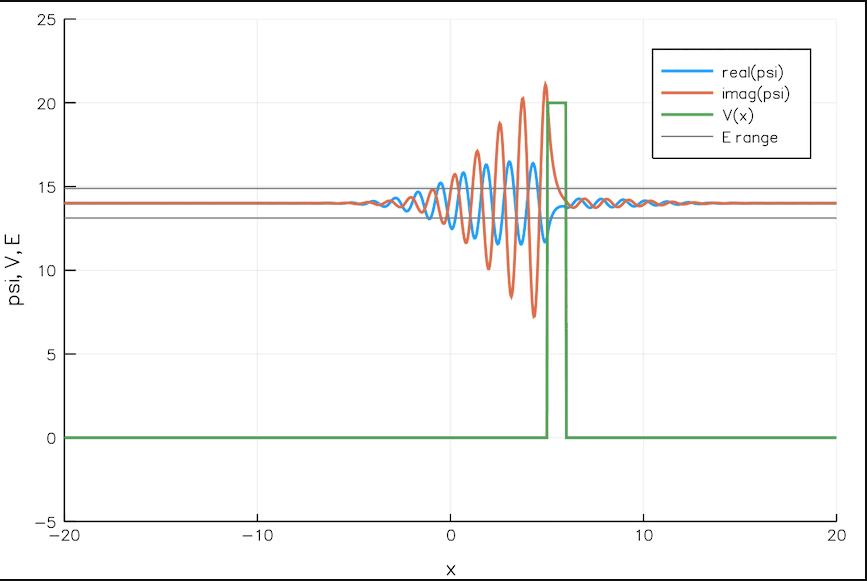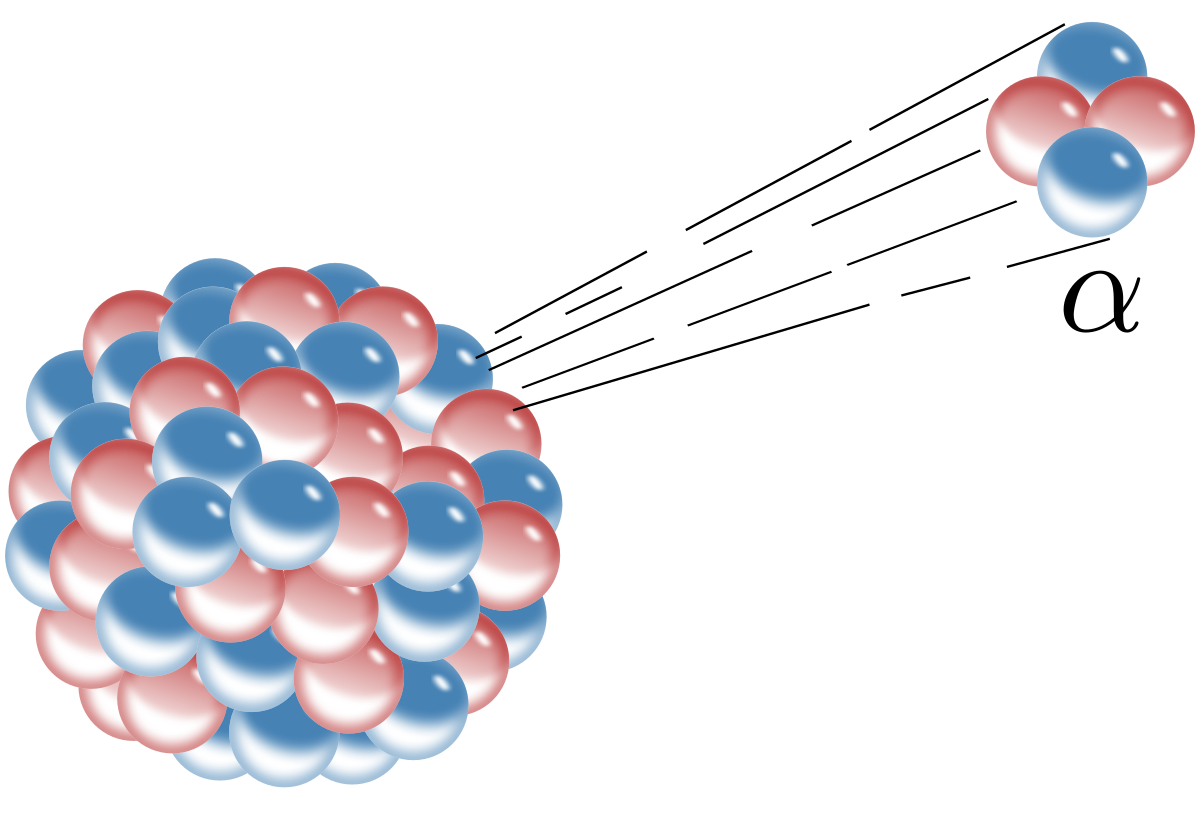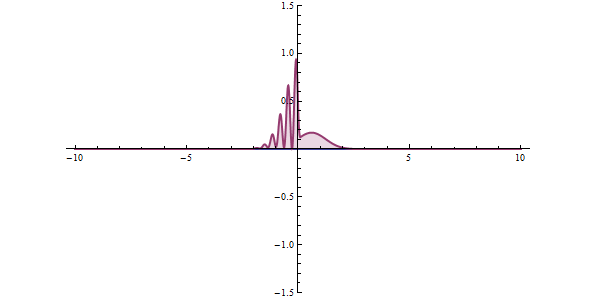

Cosmox Blogs
Quantum Tunneling
We all have seen people just walking through walls in many magical and sci-fi movies by some superpower or any spell and imagined ourselves as doing so, but we thought it was just a part of our wild fantasies which can never prove to be true in real world but as it turns for subatomic particles it is true how so well let’s see;
History
The concept of quantum tunneling first arise from radioactivity which was discovered in 1896 by Henry Becquerel, radioactivity was further examined by Marie Curie and Pierre Curie for which they earned the Nobel prize in physics in 1903. Quantum tunneling was first noticed in 1927 by Friedrich Hund while he was calculating the ground state of the double-well potential. Leonid Mandelstam and Mikhail Leontovich discovered it independently in the same year. They were analyzing the implications of the new Schrödinger wave equation. Its first application was a mathematical explanation for alpha decay, which was developed in 1928 by George Gamow (who was aware of Mandelstam and Leontovich's findings) and independently by Ronald Gurney and Edward Condon. The latter researchers simultaneously solved the Schrödinger equation for a model nuclear potential and derived a relationship between the half-life of the particle and the energy of emission that depended directly on the mathematical probability of tunneling.
All We Know So Far
Quantum tunneling is also a part of quantum mechanics meaning this phenomena happens at the quantum scale where particles like electrons penetrate a potential energy barrier where a sufficient amount of energy possessed by a particle can increase its probability of penetrating the barrier depending upon the width thickness of it. We can imagine this as a ball(particle) rolling over a hill(barrier) where a sufficient amount of momentum possessed by the ball can get it to the other side of the hill, but here particles just penetrate the barrier as they try to cover the shortest distance between the two points. The more energy possessed by the particle the higher the probability of it penetrating the barrier, if not just like a ball bounces off a wall it either bounces off or becomes a part of the wall(absorption). When the particles penetrate the barrier their path is called is the tunnel through which they travel, and you might ask how can something as small as a ball just go through a hill, how can a particle whose energy potential is lower than that of the barrier penetrate it and that’s why it penetrates classical mechanics so what the particle does is it gains energy from its surroundings and repays it back by making the reflected electrons more energetic than they were otherwise going to be. Now treating the matter as both a particle and a wave gives rise to the uncertainty principle which tells us we can never measure the position and momentum of a particle simultaneously since it has a dual nature. For example, if the probability of a particle’s position is taken as 1 the probability of the speed approaches infinity, so the probability of a particle being on the other side of the barrier is non-zero.
The Tunneling Problem
The wave function of an isolated quantum system mathematically describes its state and evolution with respect to time. Mathematical descriptions like Schrodinger’s equation
can be used to deduce a state of a quantum system at a point in time. So if we take the equations into account it tells us that the wave packet becomes more delocalized while tunneling, some of it will be transmitted to the other side of the barrier and most of it will get reflected since the barrier has greater energy potential. So now it exists on both sides with a lower and higher amplitude.

Here is a representation of a wave packet crossing the barrier as it crosses it much so as you can see that some of it is passing the barrier while some of it is getting reflected back. If we were to take an example during alpha decay when an unstable nucleus gives off radiation in the form of alpha particles a bit of its wave amplitude passes the potential barrier (nucleus) that’s why the more the wavelength higher the probability of it crossing the barrier like gamma unlike alpha can pass through thicker barriers.
Faster than Light
There is a consideration of FTL(faster than light) travel possible of spin zero particles while tunneling but this violates causality since it will cause the particle in a frame of reference exists before it arrives In 1998, Francis E. Low reviewed briefly the phenomenon of zero-time tunneling. More recently, experimental tunneling time data of phonons, photons, and electrons was published by Günter Nimtz. An experiment done in 2020, overseen by Aephraim Steinberg, showed that particles should be able to tunnel at apparent speeds faster than light.

Applications
Tunneling is the cause of some important macroscopic physical phenomena. Quantum tunneling has important implications for the functioning of nanotechnology.
Electronics
Tunneling is a source of current leakage in very-large-scale integration (VLSI) electronics and results in the substantial power drain and heating effects that plague such devices. It is considered the lower limit on how microelectronic device elements can be made. Tunneling is a fundamental technique used to program the floating gates of flash memory.
Nuclear Fusion
Quantum tunneling is an essential phenomenon for nuclear fusion. The temperature in stellar cores is generally insufficient to allow atomic nuclei to overcome the Coulomb barrier and achieve Thermonuclear Fusion. Quantum tunneling increases the probability of penetrating this barrier. Though this probability is still low, the extremely large number of nuclei in the core of a star is sufficient to sustain a steady fusion reaction.

Radioactive Decay
Radioactive decay is the process of emission of particles and energy from the unstable nucleus of an atom to form a stable product. This is done via the tunneling of a particle out of the nucleus (an electron tunneling into the nucleus is electron capture). This was the first application of quantum tunneling. Radioactive decay is a relevant issue for astrobiology as this consequence of quantum tunneling creates a constant energy source over a large time interval for environments outside the circumstellar habitable zone where insolation would not be possible (subsurface oceans) or effective.

Mathematical Description
or
Where
1.
is the reduced Planck's constant,
2. m is the particle mass,
3. X represents distance measured in the direction of motion of the particle,
4. Ψ is the Schrödinger wave function,
5. V is the potential energy of the particle (measured relative to any convenient reference level),
6. E is the energy of the particle that is associated with motion in the x-axis (measured relative to V),
7. M(x) is a quantity defined by V(x) − E which has no accepted name in physics.
The solutions of the Schrödinger equation take different forms for different values of x, depending on whether M(x) is positive or negative. When M(x) is constant and negative, then the Schrödinger equation can be written in the form
The solutions of this equation represent traveling waves, with phase-constant +k or -k. alternatively, if M(x) is constant and positive, then the Schrödinger equation can be written in the form
The solutions of this equation are rising and falling exponentials in the form of evanescent waves. When M(x) varies with position, the same difference in behavior occurs, depending on whether M(x) is negative or positive. It follows that the sign of M(x) determines the nature of the medium, with negative M(x) corresponding to medium A and positive M(x) corresponding to medium B. It thus follows that evanescent wave coupling can occur if a region of positive M(x) is sandwiched between two regions of negative M(x), hence creating a potential barrier.
The mathematics of dealing with the situation where M(x) varies with x is difficult, except in special cases that usually do not correspond to physical reality. A full mathematical treatment appears in the 1965 monograph by Fröman. Their ideas have not been incorporated into physics textbooks, but their corrections have a little quantitative effect.

Quantum tunneling through a barrier. At the origin (x = 0), there is a very high, but narrow potential barrier. A significant tunneling effect can be seen.
Conclusion
So far, using the equations and experimental conformations has told us that it is possible for subatomic particles to tunnel through the energy barriers and it appears to even outmatch the speed of light(c). But it again appears that these subatomic particles are able to use the superpowers which we thought existed only in our imagination, but nonetheless a lot of research is going on it to know what truly everything is around us, is it just a play by the subatomic particles to fool our eyes or something else.

Cosmox Blogs
A non profit organization that works on writing and delivering blogs on cosmology, natural sciences & environment, so that people can learn more about it. We even run a forums page, where our users interacts with each other and discuss about Cosmology, Natural Sciences & Astronomy. We even run an instagram and a youtube channel with podcasts.